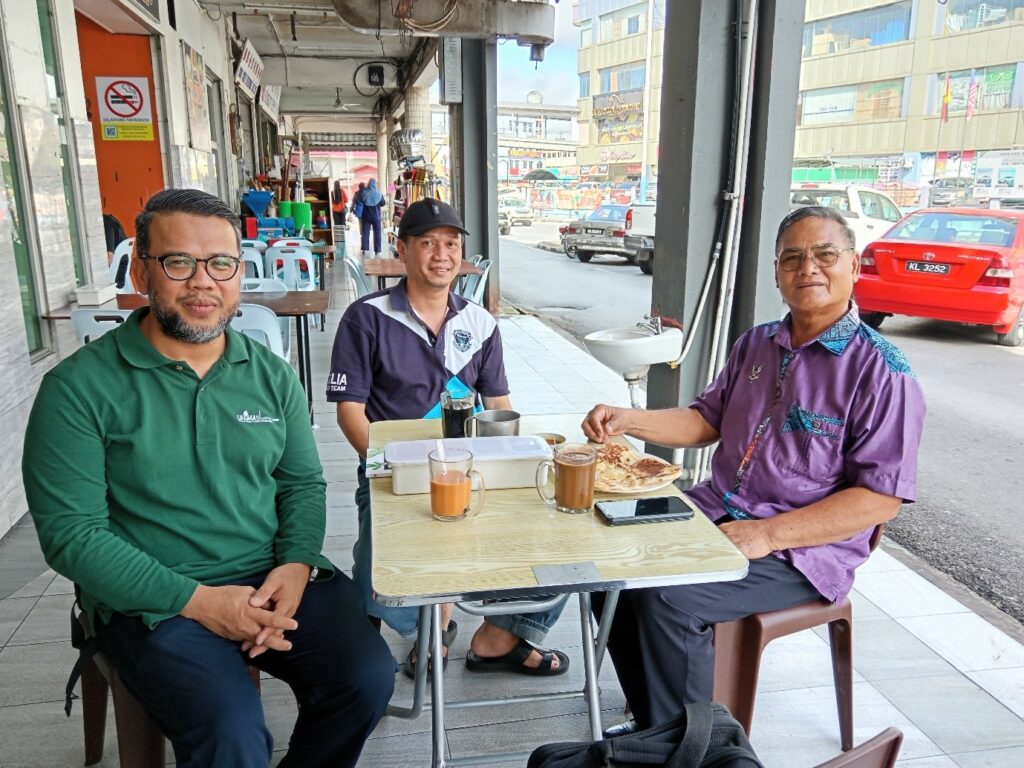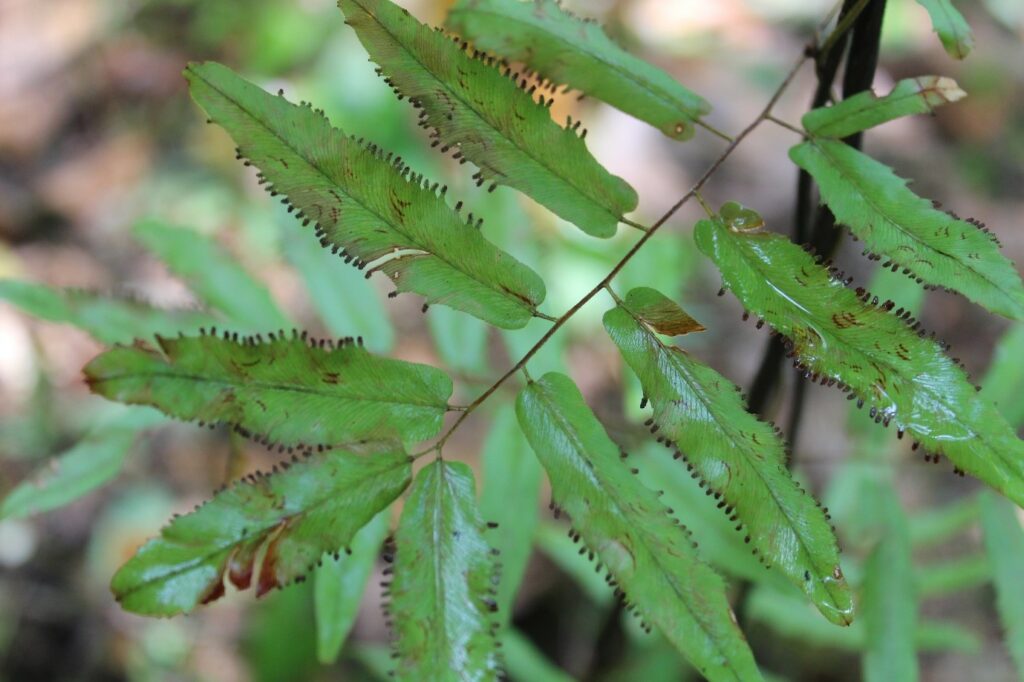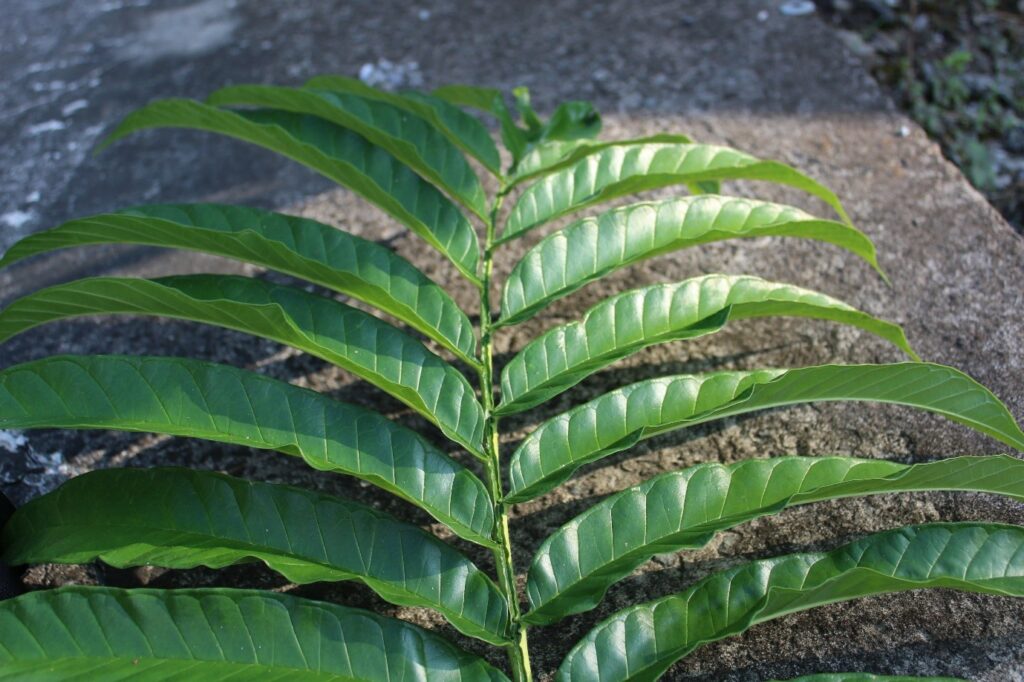
Researchers with Penghulu Lalam anak Sambat, head of the Bisaya community in Limbang.
By Dr Dilah Tuah & AP Dr Chong Shin
A culturally significant research initiative is currently taking place in northern Sarawak to document and safeguard the traditional ethnobotanical knowledge of the Bisaya community. Supported by a special grant from the Deputy Prime Minister of Malaysia YAB Dato’ Sri Haji Fadillah bin Haji Yusof, the project represents an important contribution to the preservation of Malaysia’s intangible heritage while directly advancing several United Nations Sustainable Development Goals (SDGs), namely SDG 4 (Quality Education), SDG 11 (Sustainable Cities and Communities), and SDG 15 (Life on Land).
Led by Dr Dilah bin Tuah from Universiti Malaysia Sarawak (UNIMAS) in collaboration with Associate Professor Dr Chong Shin from Universiti Kebangsaan Malaysia (UKM), the study focuses on identifying and documenting traditional plant-related terms in the Bisaya language. These terms are part of a deeply rooted indigenous knowledge system that connects the community’s language, rituals, medicine, food practices and ecological understanding.
Fieldwork conducted across several Bisaya villages in the Limbang district employed a community-based qualitative methodology. Through interviews with traditional healers, village elders and native speakers, researchers recorded over 100 unique ethnobotanical terms. Each term reflects the Bisaya people’s long-standing relationship with their environment and the spiritual symbolism attached to certain plants.

Penghulu Lalam anak Sambat assisting with ethnobotanical data collection in Limbang, sharing traditional knowledge of local plant species.
Examples include sesubu’, which is placed in rice storage areas to ensure a bountiful harvest, sandiong, used as a remedy for skin ailments, and keladi tikur, which is believed to assist in the treatment of early-stage cancer. These plants are not only used for practical purposes but also play key roles in ceremonies and local beliefs.

Dr Dilah Tuah with Penghulu Lalam exploring the forest to photograph and document traditional Bisaya plant knowledge.

Sesubu’ is a traditional plant placed in rice storage areas by the Bisaya community in Limbang, believed to ensure a bountiful harvest.

Sandiong, the Bisaya’s trusted leaf for healing skin naturally.
Ethnolinguistic analysis revealed the richness of the Bisaya language in describing plant functions and symbolism, with features such as reduplication, metaphor and categorisation reflecting cognitive and cultural patterns. However, the team also found that this traditional knowledge is rapidly fading due to language shift, generational disconnect and increasing urban migration. Many younger Bisaya no longer recognise these terms or understand their cultural relevance.

With Ketua Kaum Yampil Panchar at Kampung Terumba, a respected leader and guardian of Bisaya heritage.
The research initiative is also being extended through two forthcoming publications. A manuscript has been submitted to Pustaka Negeri Sarawak for consideration under the Sarawakiana book series, aimed at promoting local cultural heritage. In addition, an academic volume compiling the documented Bisaya ethnobotanical terms is currently in its final stages of publication. These publications are intended to serve as lasting references for researchers, educators and community members alike, further contributing to the preservation and appreciation of Sarawak’s indigenous knowledge systems.
The research highlights how interdisciplinary collaboration can be applied to community-engaged heritage work. Combining ethnography, linguistics, and botany, the project stands as a model for how universities can play an active role in cultural sustainability while supporting local empowerment and academic rigour.
Future phases of the project will explore dialectal variations of plant names and symbolic interpretations within the broader Bisaya cosmology. Plans are also in place to host knowledge-sharing workshops involving elders and youth, with the aim of revitalising traditional knowledge through participatory learning and oral transmission.
The Bisaya community’s plant knowledge reflects more than utility. It encapsulates identity, memory and the cultural fabric of a people who have long thrived in harmony with their natural environment. Documenting and preserving this local wisdoms and knowledge ensures that their legacy is not only remembered but actively sustained for generations to come.